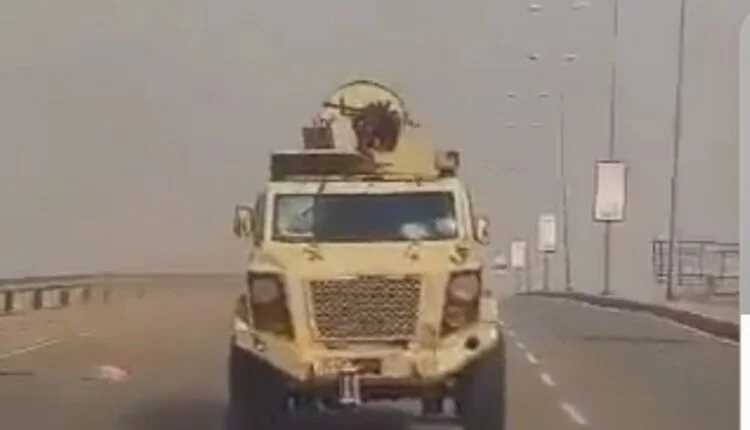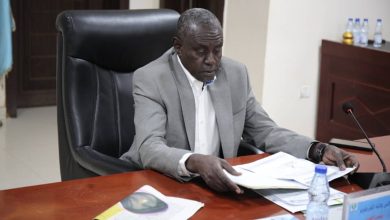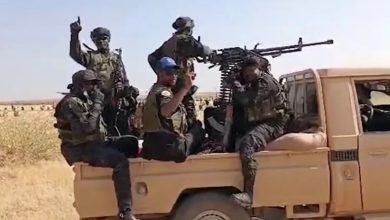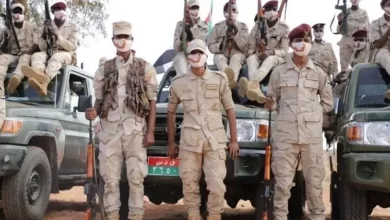The Militia Suffered Heavy Losses. …The Army Shakes the Ground under Rebels’ Feet

Sudan Events – Abdul Basset Idris
For more than (72) hours, the army put the militia in the city of Bahri under high pressure, following the destruction of the largest at thisack launched by the mercenaries on the signal corps since the start of the war. At dawn on Friday, the army infantry crossed the Halfaya Bridge to Bahri and dealt painful blows to the militia.
High pressure:
This coincided with ground and air operations on many combat fronts. Hattab’s army fought violent ground operations in Al-Kadro and Moro Street in Halfaya and other areas. A circulating video clip showed army soldiers crossing the Halfaya Bridge from the eastern side, and the army tightened its noose on the militia in the Umm Badas and West Omdurman pockets to the south, the armored corps advanced in a calculated deployment. In Sennar, the army and popular resistance were able to kill and capture most of the force that attacked the Jabal Muya area, in addition to arresting more than 37 civilian vehicles belonging to citizens that were used by the militia. To the west, military aircraft are still targeting the militia’s supply sources, where they with a concentrated air strike, it targeted Al-Zarq base, and succeeded in destroying the fuel and weapons supplies, at a time when the army is still continuing its qualitative operations around Al-Obeid and Babanusa in North and West Kordofan.
The army reveals facts:
Officially, the army announced in a statement that it had carried out a successful qualitative operation at dawn on Friday, which led to the destruction of a large number of enemy vehicles and left many of the leaders and members of the Dagalo clan terrorist militia dead. The forces were also able to reach the depths of the enemy in the Bahri and Halfaya areas. The army said that 7 of the martyrs died during the operation, in addition to 28 of his soldiers being injured.
Transformations in favor of the army:
Journalist Mohamed Hamed Jamaiah says that field transformations are generally in favor of the army. Hamed adds in a post on his Facebook page: “I think, accordingly, that the army today managed the theater with a ‘defining all’ approach and testing all fronts, moving towards a group of goals while maintaining a hidden purpose for a specific goal.”
Nawar continued, “This situation usually ends with simultaneous operations with implementation and then returns until another attack,” and added: “Therefore, the media must be patient in determining the outcome and calculating distances on the ground in advance, and thus not raising expectations ceilings diligently.”
Mohammad Hamed reveals that the most important aspect of the Friday battle is that the army tested (Al-Musnad) and conducted a strong and simultaneous movement operation, definitely and inevitably, and it is certain that it was for a goal within the overall vision of the party in the army that plans and manages the war, and that I believe that its working conditions, equipment, and readiness are now complete.
Destructive targets:
Major General (R) Mohammad Ibrahim tells (Sudan Events) that the successful Bahri operation, which the army took by surprise the militia in Bahri, aims to destroy its ability to launch any attack, as happened with signal weapons or through artillery bombardment on Omdurman, and indicates that this coincides with the implementation of the plan attacks in multiple axes in Khartoum, Gezira and Darfur, which led to the killing of large numbers of militia members. Ibrahim believes that these operations are exercises for sweeping ground offensive operations that the army will launch at surprising times, noting that successful operations also represent a test of the readiness of the forces in terms of equipment, machinery and knowledge of the extent of its understanding of offensive plans allows it greater knowledge of the battlefield.



